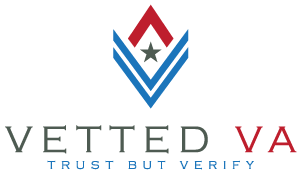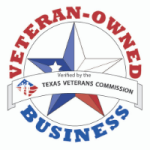Vetted VA Live: Understanding the Loan Estimate
Buying a home with your VA loan benefit is one of the biggest financial moves you’ll make — and it starts with a simple but powerful document: the Loan Estimate (LE).
This three-page form tells you exactly what your loan will cost. But many veterans overlook key details that could save thousands.
In this guide — based on advice from Vetted VA Live and verified by the VA Lender’s Handbook (VA Pamphlet 26-7) — we’ll walk through how to read your VA Loan Estimate, what to double-check, and how to avoid common mistakes.
What Is a VA Loan Estimate (and Why It Matters)?
The Loan Estimate is a federal form lenders must give you within three business days after you apply for a loan.
It helps you:
-
Understand your loan’s terms and costs.
-
Compare multiple lenders fairly.
-
Estimate how much cash you’ll need to close.
“It’s your financial roadmap,” said Brendan McKay of Vetted VA. “Ignore the interest rate alone — Box A is where you find the truth about what you’re paying.”
Page 1 – The Basics: Loan Terms and Key Numbers
This first page summarizes the major details of your VA loan.
✅ Loan Type: Check that it says VA.
✅ Loan Term: 15- or 30-year term.
✅ Interest Rate: Fixed or adjustable.
✅ Monthly Payment: Principal, interest, taxes, and insurance (PITI).
✅ Prepayment Penalty: None on VA loans — ever.
✅ Balloon Payment: Never required on VA loans.
VA loans are structured to protect you — no hidden fees, no penalties, and no prepayment traps.
Page 2 – VA Loan Closing Costs Explained
This is where the real numbers live. It breaks down what you’ll pay in closing costs.
Box A: Lender Origination Charges
Shows your lender’s fees and discount points.
-
Lower rates often mean higher points — compare carefully.
-
“No-fee” loans usually hide costs in the rate.
Box B–C: Services You Can Shop For
Covers title insurance, appraisals, pest inspections, and credit reports.
-
VA appraisals follow published fee limits per region.
-
You can choose your title company, though costs rarely vary much.
“Every VA buyer should understand that junk fees aren’t allowed,” McKay noted. “VA rules keep costs fair and transparent.”
Page 3 – Comparing Lenders and Total Loan Costs
The final page helps you compare lenders side by side.
Look closely at:
-
APR (Annual Percentage Rate): Reflects rate + fees.
-
Rate Lock Expiration Date: Protects your rate until closing.
-
Estimated Cash to Close: Know what funds you’ll need upfront.
“A lower rate doesn’t always mean cheaper,” said Josh Lewis. “It might just hide higher lender costs somewhere else.”
The VA Funding Fee (and Who’s Exempt)
The VA funding fee helps sustain the loan program for future veterans.
Current rates (as of VA Pamphlet 26-7, Ch. 8 §2):
-
2.15% for first-time use with 0% down.
-
3.3% for subsequent use with 0% down.
You’re exempt if:
-
You have a VA disability rating of 10% or higher, or
-
You’re an active-duty Purple Heart recipient.
If your rating is pending, you can still close now and request a refund later once your exemption is approved.
Escrow, Title Insurance, and Property Taxes
These often-confused costs are essential parts of homeownership:
Title Insurance protects your ownership rights — not property condition. It’s a one-time fee and strongly recommended.
Escrow Accounts collect your monthly taxes and insurance. These amounts may rise if:
-
Your county reassesses property values.
-
Insurance premiums increase.
-
You buy new construction and taxes adjust after completion.
“If your payment goes up, it’s not theft — it’s just reality catching up,” McKay said.
How to Compare VA Loan Estimates the Right Way
Many veterans compare only rates — but smart borrowers compare the full Loan Estimate.
Look for:
-
Box A – Lender fees and discount points.
-
Page 3 – APR and total five-year costs.
-
Lock Period – Ensure it’s long enough to close.
“If two lenders show the same rate, pick the one with the lower total cost, not just the better headline,” said Lewis.
Vetted VA Expert Tips for Veterans
-
Get your Certificate of Eligibility (COE) early.
-
Check for funding fee exemptions before applying.
-
Work with lenders who specialize in VA loans.
-
Ask questions early — before locking your rate.
-
Join the Vetted VA community to verify advice against the VA Handbook.
“The more you understand, the stronger your position as a buyer,” said Nathan Knottingham, Vetted VA COO.
Final Thoughts: Clarity Builds Confidence
Your VA Loan Estimate isn’t just paperwork — it’s your key to a confident, informed home purchase.
Read it line by line, compare lenders fairly, and partner with a Vetted VA professional who knows the rules and fights for your best outcome.




